I bore easily. I’m not proud of it, but it’s true. It’s a weakness I admit to, and I struggle to manage it. One of the strategies I use to manage boredom is to take notes.
I’m a huge believer in taking notes with an actual pen and paper because of the research on its benefits, and I recently filled a notebook I’d been using for four years (!) for taking notes in church.
When I bought a new notebook, I decided to try to use sketchnoting in it. I’ve seen a lot of sketchnoting ideas and references on Twitter and Pinterest, but I’d never tried it myself. I’ve not developed any artistic talent, and I’m not someone who likes to draw, necessarily. Nevertheless, I thought it might help me make the note taking even more fun.
What I Needed/Wanted to Start Sketchnoting
I had heard of Mike Rodhe and his Sketchnote Handbook book, so I bought it. I also bought:
- The Sketchnote Workbook
- These Zebra pen highlighters
- The Art of Visual Notetaking
- Visual Notetaking for Educators
- This ridiculously expensive mechanical pencil
- I had this bullet journal notebook already
- I had these pens already (oh, these pens…how I love them)
I pretty much spend all of my allowance on office supplies, so that’s nothing new.
How I Got Started
I was traveling to Iowa (hello, Johnston & Des Moines friends!) and flying from there to a conference in Atlanta. I read the Sketchnote Handbook on the plane, and I’d brought my supplies with me in a pencil bag.
I decided to bring a standard composition notebook to start with because the Leuchtturm notebook is so gorgeous (and almost $20), and I didn’t want to feel like I’d wasted it with poor quality notetaking for my first efforts.
I read the book in a couple of hours, and then I spent two hours making myself a suggestion page. I just took a piece of copy paper and folded it in a hamburger fold and wrote on the outsides (the pen bled through, so I couldn’t use the middle as I had planned).
I found the ideas for the suggestion page in the Sketchnote Handbook, from watching Mike Rodhe’s videos, and on Pinterest.
Here’s what the suggestion page looks like. This is the front:
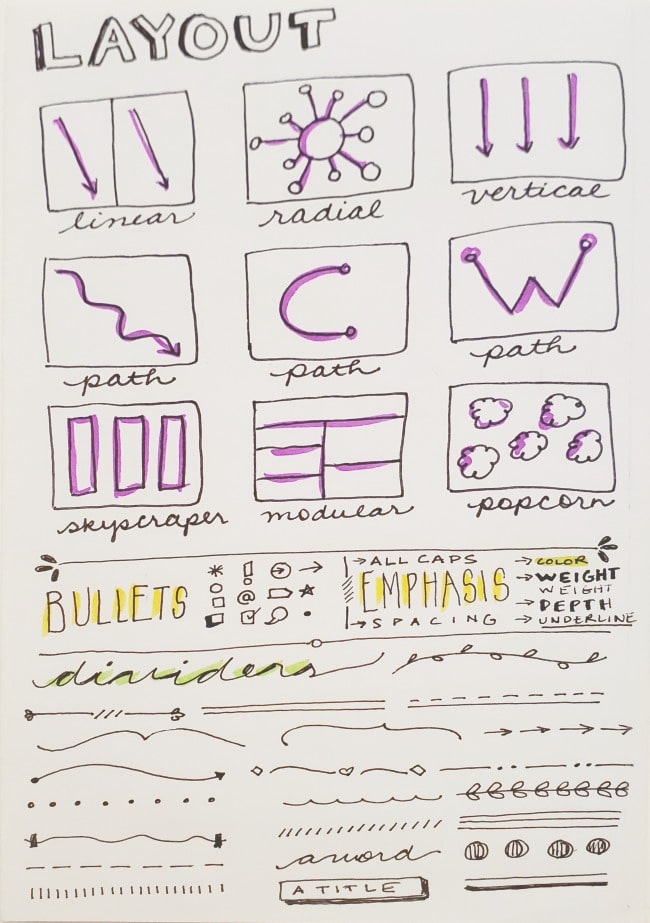
And this is the back:

How I Started Actually Using Sketchnoting
I was at a National Speakers Association conference, and I used what I’d learned to take pages and pages of notes. I just laid out my pens, kept my suggestion page on my lap to look at, and gave it a shot.
Here are examples:
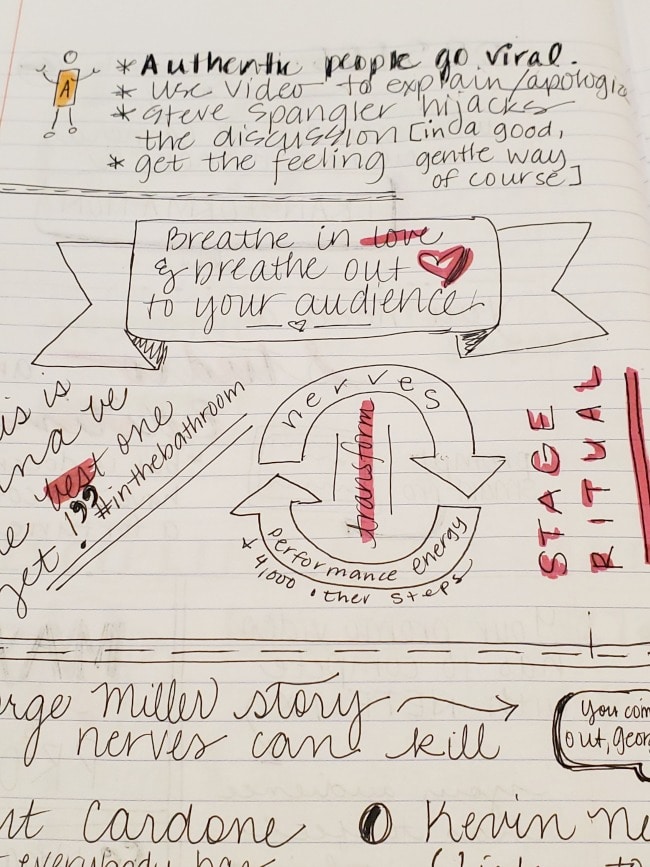
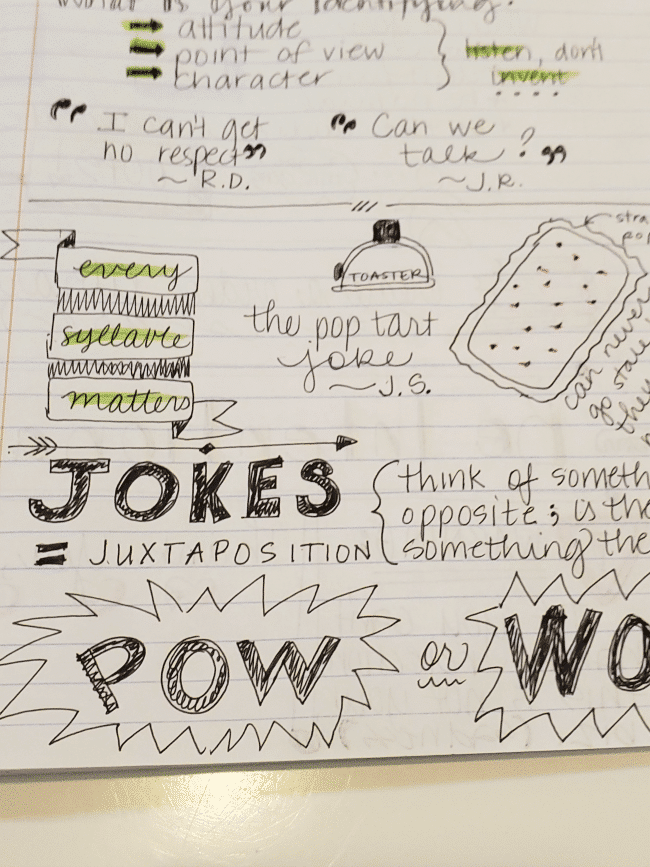
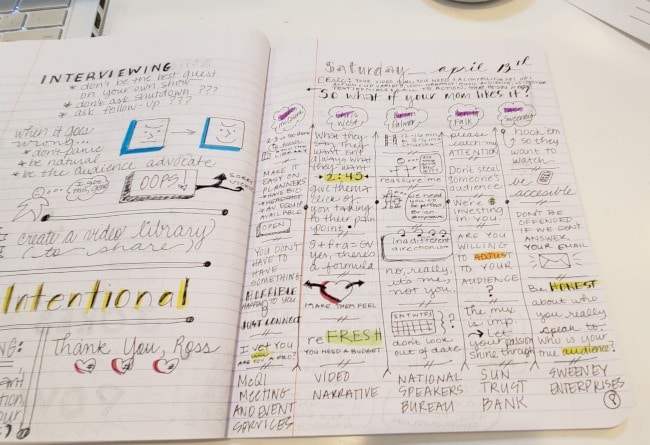
How I Felt about the Sketchnotes
I was shocked at how patient I was with myself. I thought my attempts were modest, but a man sitting next to me leaned over at one point and said, “I should just pay you for a copy of your notes.”
I tweeted out my notes from a panel discussion.
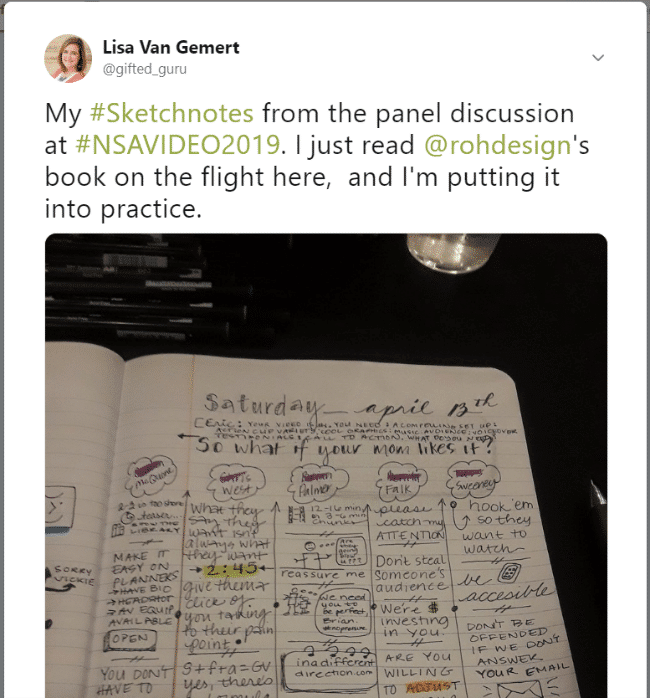
And then the real, live author of the book tweeted a reply!
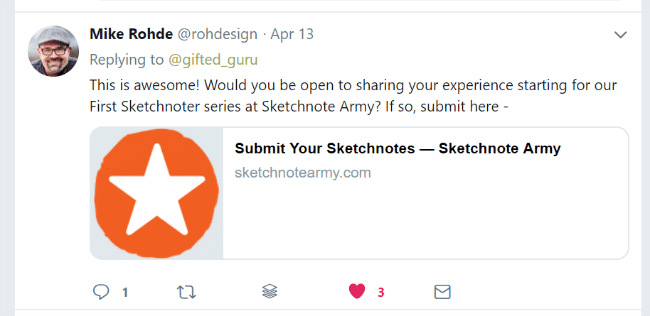
Whoa! I felt famous. Well, moderately famous. Okay, I felt like what counts for fame when you’re in gifted ed.
I’ll take it.
I made a couple of true errors (spelling, etc.), but I found that I wasn’t as bothered by them as I expected to be. I think it was the tone of Mike’s book. It’s very Zen about making “mistakes.”
What I Learned from Sketchnoting
My first experience taught me this:
- Sketchnoting forced my focus very deeply. I had to listen with clean, pure intent to find the essence of the idea the speaker was trying to convey.
- I upped my paraphrasing/analysis skills. I found that some speakers required me to really think about how to distill what they were saying into a core idea, while others made it more obvious. I learned a lot about how to be a better speaker from the listener point of view.
- I didn’t like the Zebra highlighters as much as I thought I would and quickly switched to my Tombow dual brush markers that I had also brought with me. The Zebras have a lovely firm chiseled tip that’s great for control and a fab case that lets them stand up, but the colors didn’t excite me, and I like the flow of the Tombow’s brush tip. I think there’s a place for both.
- I liked the weight of the ridiculously expensive mechanical pencil. It felt substantial in my hand, and I ended up liking the idea of owning a pencil for a really, really long time.
- I found myself struggling to impose organization on some of talks, and I realized how important it is to help the listener form a mental framework of what you’re saying. Even just this one experience will make me a better teacher.
- It’s not about art: it’s about the art of capturing and honoring ideas. It’s not intimidating. I took a lot of careful time to make the suggestion sheet, but you can see that my actual notes are far less deliberate because of time. That’s fine.
- Sketchnoting is a great way to truly learn the importance of practice. In the book, one of the contributors recommends sketching something 50 times to really make it yours, and I found that the more I sketched the same shapes, the more comfortable I became with them. That sounds obvious, but it’s an important lesson.
Where I’m Going from Here
Here’s what I’m going to do next:
- practice in The Sketchnote Workbook
- read the book about using it in class
- make a suggestion sheet with people and icons
- keep looking for ideas at the Sketchnote Army
- keep practicing!
Overall, I couldn’t be happier with the experience, and I really recommend it (and Mike).
You May Also Like:
- Printable Finger Labyrinths
- Differentiating for the Nature & Needs of the Gifted: A Real Teacher’s Ideas
- My Five Favorite Office Supplies
If you liked this article and want to stay in the loop, you may wish to sign up for my free newsletter.

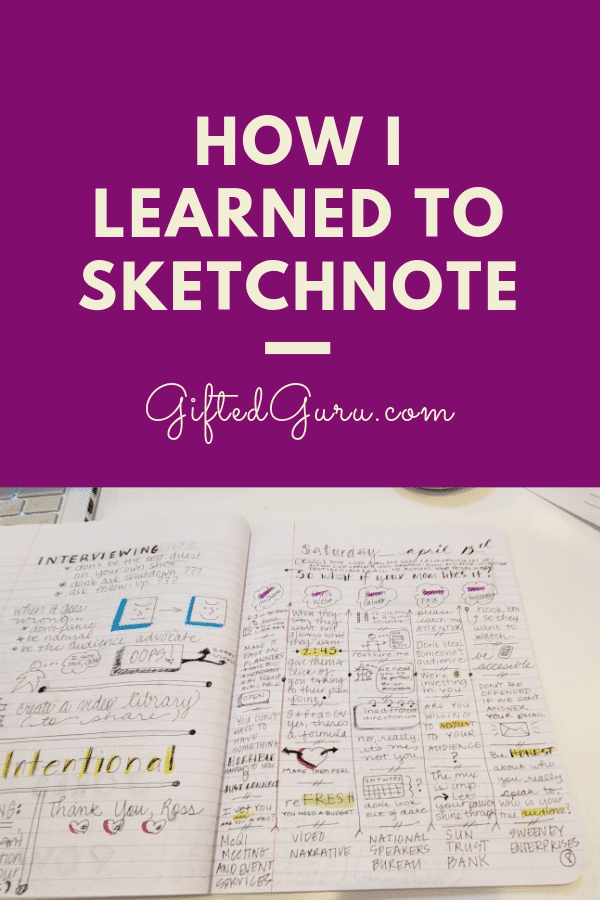
Note: Sometimes I use affiliate links, which means that if you click through and buy something, I get a few pennies (to buy more books!). It will never cost you anything extra.





